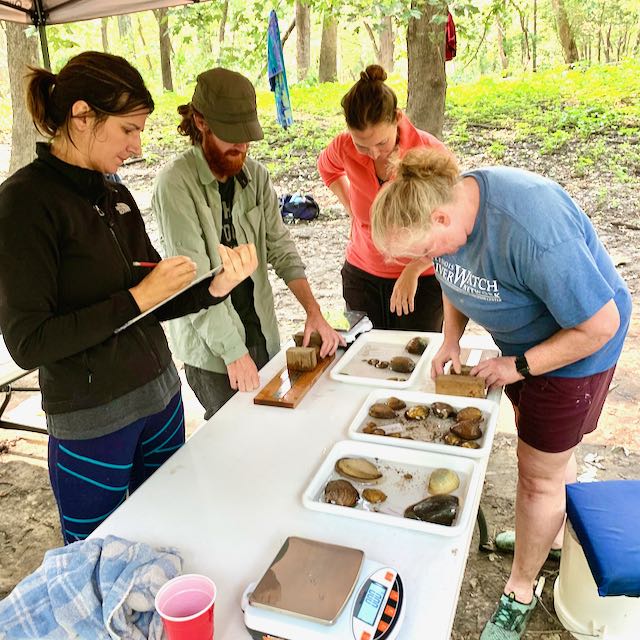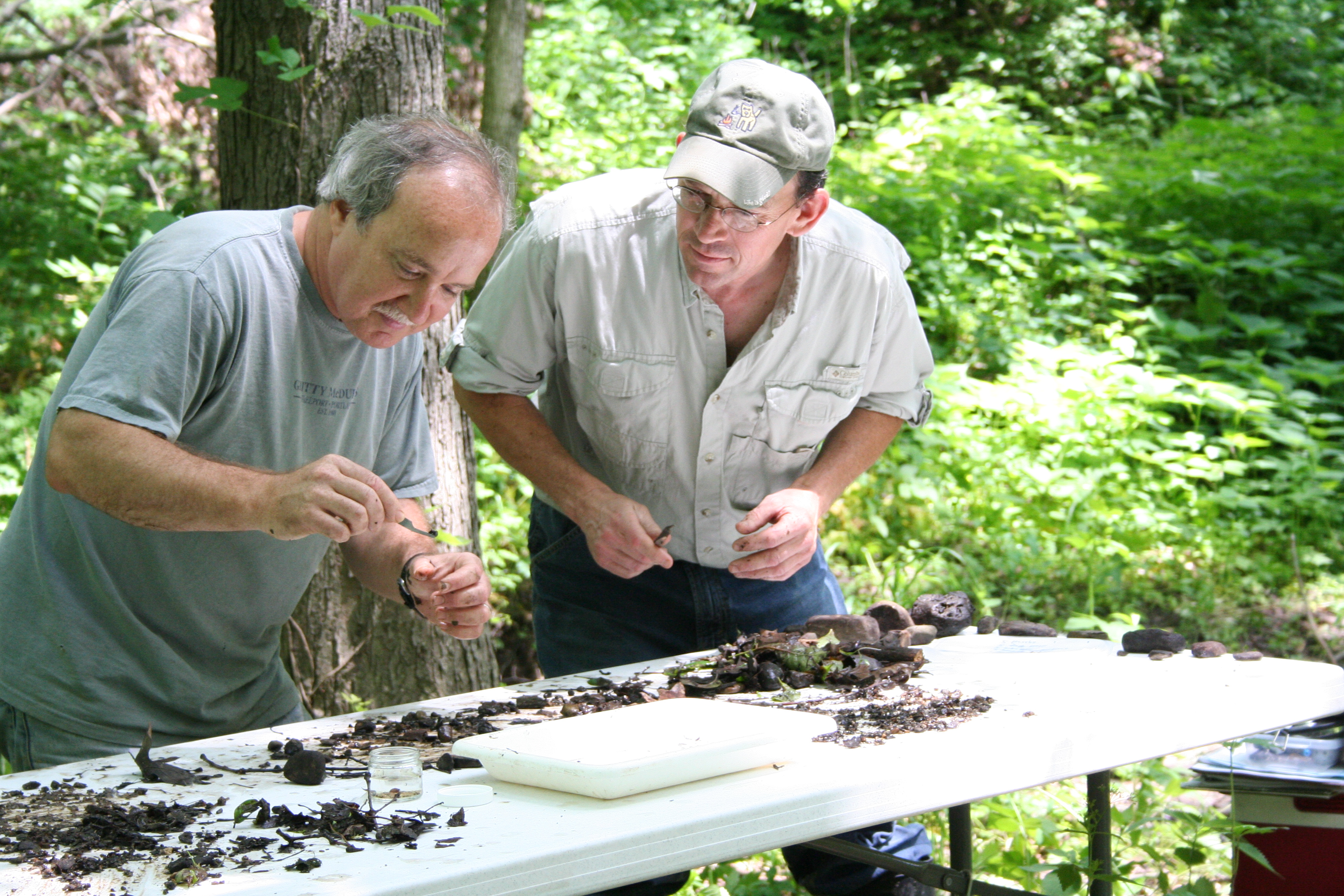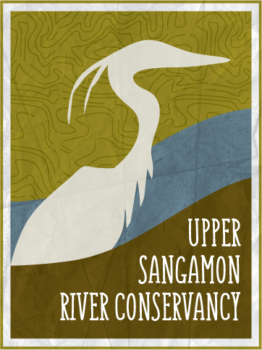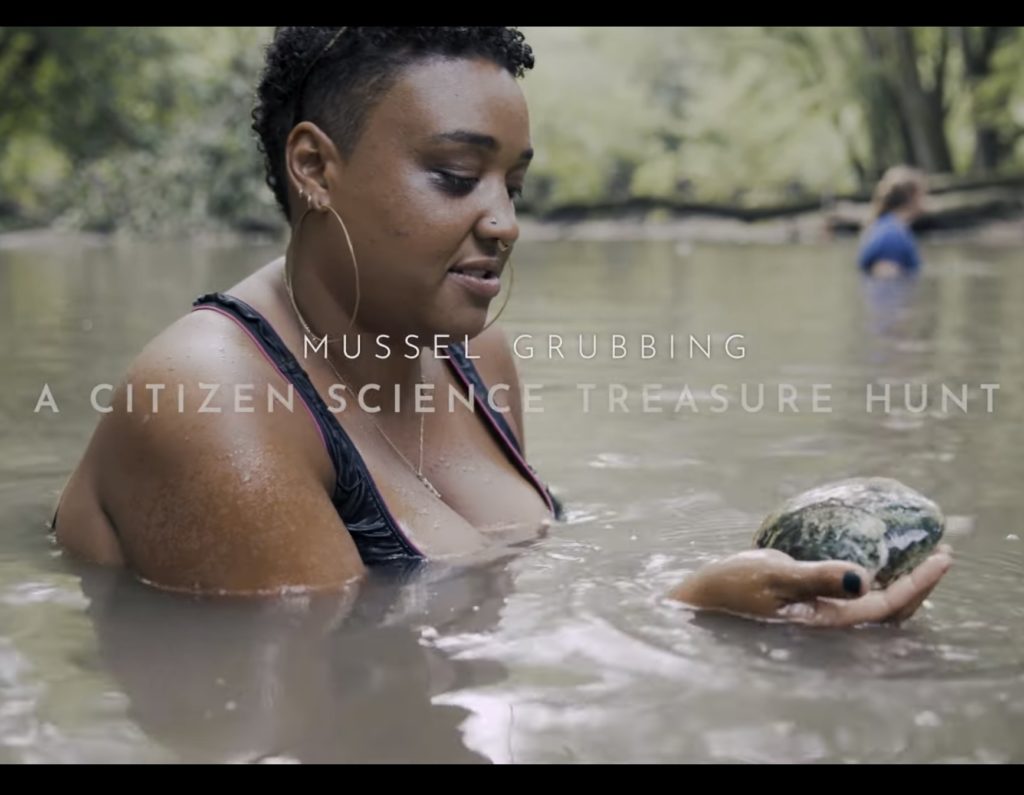“Citizen Science is most simply described as public participation in organized research efforts”. – Janis Dickinson & Rich Bonney
USRC conducts invertebrate monitoring at 9 sites each Spring, and mussel surveys at 4 sites each August. These activities provide the non-professional an opportunity to contribute meaningful information to science, to discover more about the world in which they live, and to be part of a great American tradition.Watch the Award Winning USRC Citizen Science Video.
Thanks Jason Lindsey
Two Track Road Productions!
Winner of the Best Documentary Film at the 2023 World Water Film Festival
The film was produced in collaboration with: Illinois RiverWatch – National Great Rivers Research & Education Center
In partnership with: Illinois Natural History Survey – Missouri Botanical Garden – St. Louis Zoo
Funded by: Consortium of Universities for the Advancement of Hydrologic Science, Inc. (CUAHSI) – The Living Earth Collaborative
Mussel Survey

Check this Outdoor Illinois Wildlife Journal article for more on the survey program.
Four weekend surveys are scheduled in August 2023, beginning 8/5. This is the third year of our 10-year project, A Survey of Freshwater Mussels of the Upper Sangamon River: Community Science in Action. Mussel surveys provide great opportunities for new and returning Citizen Scientists! No previous experience required. Check the Events Schedule for dates and locations. And please contact Bruce Colravy, citizen science coordinator.
What to Expect
- Searching involves combing our hands through the river bottom, on hands and knees or sitting in shallow water, and placing mussels in bags. Timed searches are 30 minutes or 90 minutes depending on the transect (river section) you are assigned.
- Data collection follows the mussel search. Mussels are sorted by species, tagged, measured, weighed, and photographed. The mussels will then be returned to the stream where they were found.
- Lunch will be provided at about noon, then we will return to processing the mussels if necessary.
- If you need to leave before the survey is finished, that is not a problem.
What to Wear
- You should wear clothes and shoes suitable for getting soaked and muddy.
- Wear sneakers or water shoes.
- Some people wear shorts, but long pants are recommended. You may be more comfortable wearing a bathing suit under your clothes.
- Wear a hat for protection from the sun and insects. Some prefer to wear light poly or rubber gloves to help protect their hands (but must allow you to feel the mussels).
What to Bring
- A towel and a change of clothes are good ideas for a more comfortable and cleaner ride home.
- Don’t forget sunscreen and insect repellent.
- A personal water bottle is highly recommended.
River Watch
 Scott and Bruce collect invertebrates during River Watch monitoring of Crooked Creek, a tributary to the Sangamon River.
Scott and Bruce collect invertebrates during River Watch monitoring of Crooked Creek, a tributary to the Sangamon River.
The USRC monitors the quality of the Sangamon River and the streams that feed into it through invertebrate monitoring, chloride monitoring, and mussel monitoring. RiverWatch certified volunteers collect high quality scientific data that will be used by professionals and the general public to
- gauge long-term trends in stream health,
- develop land management strategies,
- identify potentially degraded waters, and
- assess the effectiveness of restoration projects.



